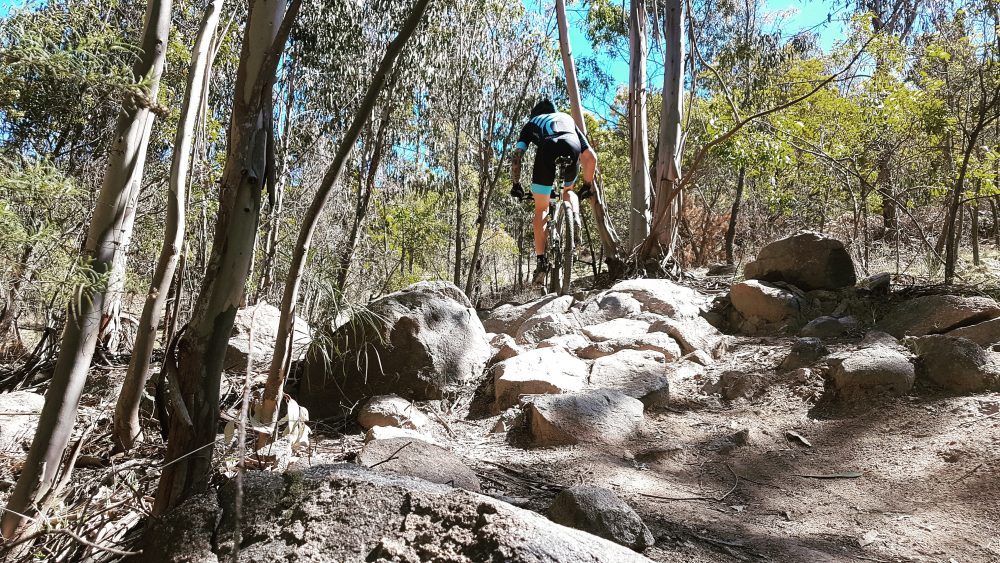11 tips for hitting technical climbs with ease
Keen to ride up steep and technical hills with minimal effort? Want to save energy so you can pin it back down the hill with energy to spare? Here are some tips to get you climbing with more ease and efficiency, even on the most difficult ascents.
- Use finesse – Even if you have the power and strength to smash up climbs, it can still be a waste of energy and effort, as well as a barrier to prevent you from improving your technique. The key is to use power where you have to and technique as much as possible, so both aid each other.
- Utilise skills before fitness – While many of the principles of climbing technique are the same as descending, there’s the added challenge of having to pedal while performing those movements, all at slower speeds and on positive gradients. That can all make things awkward, so using brute force doesn’t pay dividends. The focus should be on using smarts as well as well-timed shifts on the bike.
- Hover and move – Unlike road riders, don’t be afraid to move around on the bike a lot (in every direction), as long as it’s working the bike and not fighting it. Get a feel for when you float the front and get rear wheel traction versus getting weight on the front of the bike to weight it down or pop the rear over obstacles. The aim is to minimise stalling of your wheels by being more proactive with movements than reactive. Being almost seated, but hovering just above the saddle will help let the bike move underneath you.
- Know when to sit – Standing and pedalling can work for some climbs, but can be more detrimental on technical climbs. Apart from using more energy it can encourage your wheels to ‘wedge’ into places that stall your wheels and kill momentum. Staying seated means you don’t have to support your body weight and helps free up the front wheel when needed. If the front wheel lifts too high or wanders just shift your upper body over your bars or even slide onto the tip of your saddle to help weight it down.
- Know when to stand – Only stand when you know your wheels aren’t going to stall on an object or shape, as long as that’s the point on the climb that you need raw power to accelerate. But use that power sparingly on longer climbs.
- Use a solid cadence – Using an easier gear is always tempting when climbing. Spinning away like a road cyclist is efficient on smooth ground with no obstacles in the way. But as soon as you need to negotiate technical features that high cadence can result in erratic movements, exaggeration of stalling points, and lack of torque or strain going through the bike. That torque is necessary to aid balance and smoothness. And, as long as you stay on top of the gear, the constant drive through the bike will smoothen out the trail and simply give you more momentum, also aiding balance. You shouldn’t be grinding away like a strength effort, but also avoid the feeling of your pedal strokes being ‘empty’.
- Drive from the hips and unweight your hands – You should feel like you’re powering from the hips down, keeping your core strong, using your upper body strength to handle the bike and move around, but remaining light on your hands. As soon as you feel the ‘white knuckle’ effect for too long, release your hands on the fly. And your arms should regularly release tension in between being tense when working the bike over technical terrain.
- Scan ahead to pick lines – Riders too often weave around intimidating features, causing unnecessary lateral movements, more tensing through the body and simply messier riding. Scan ahead so you have time to plan a straight but achievable route up a hill, tackling any feature that’s in your way. Ride confidently and use effective body shifts to negotiate obstacles that might otherwise send you sideways.
- Go mental – Try being more strategic and break technical climbs down into smaller manageable sections. Without being so long and overwhelming you may find that you can relax more and handle features better, rather than getting ahead of yourself. And being relaxed and confident will let you be aggressive when you need to be.
- Breathe! – It’s common for riders to hold their breath right through technical areas, which is when they need oxygen most. Focusing on your breathing, both in and out, will also help you relax and stay nimble.
- Challenge yourself – Find a steep and technical climb that looks possible, but almost unachievable. You’ll be surprised at the sorts of gradients and terrain you can actually climb up on a bike. Set a goal like that and work out how you can get up it safely, smoothly and efficiently. Start with shorter but technical climbs, using a faster run up to help you. Then gradually aim for longer and more demanding climbs, but starting almost at a stand-still to ensure you’re not relying on speed for the first part.
Of course there are finer details that will help you climb like a weapon, so contact Ride Technics if you’re keen to take it a step further with one-on-one or group skills coaching.



